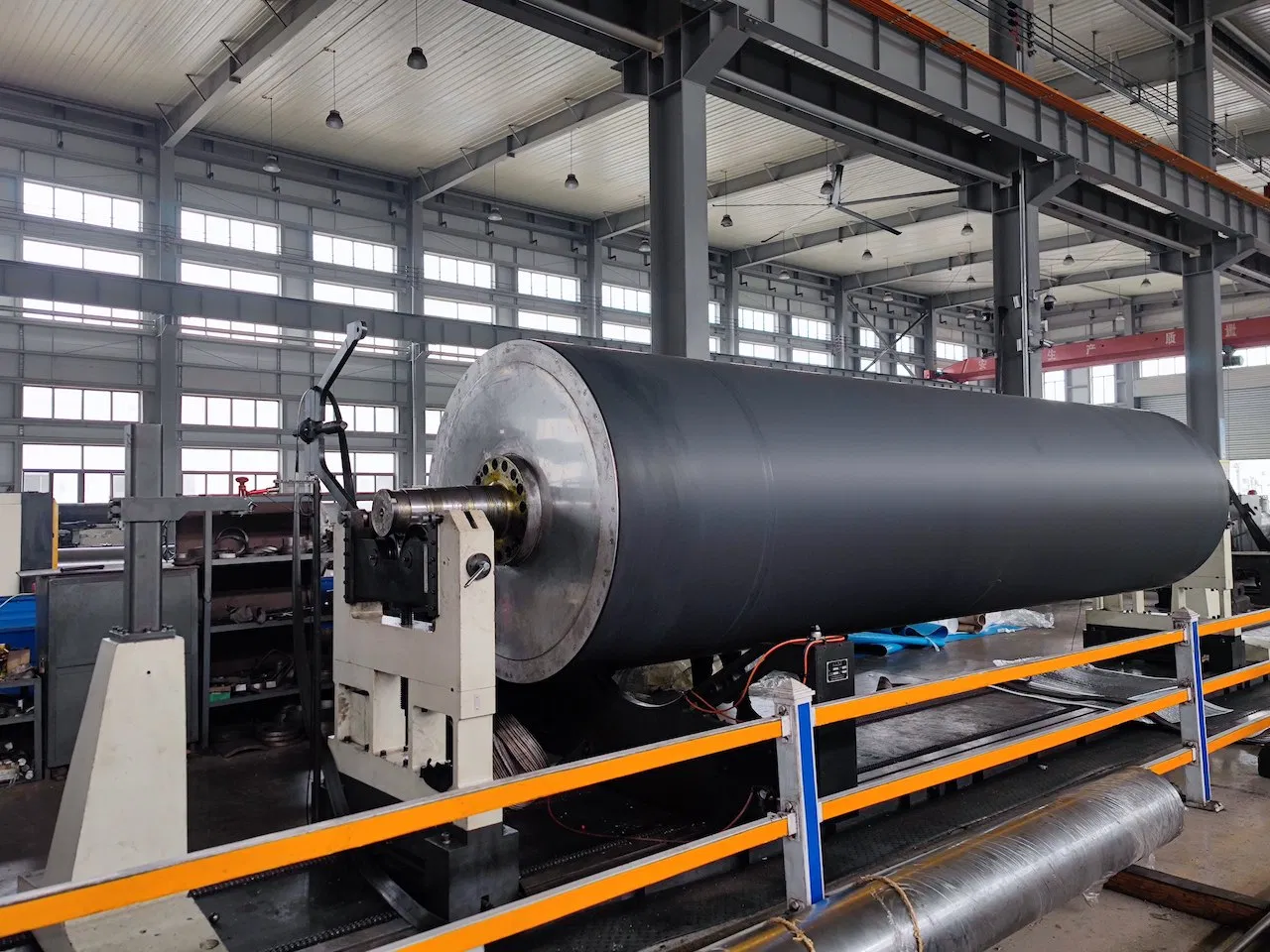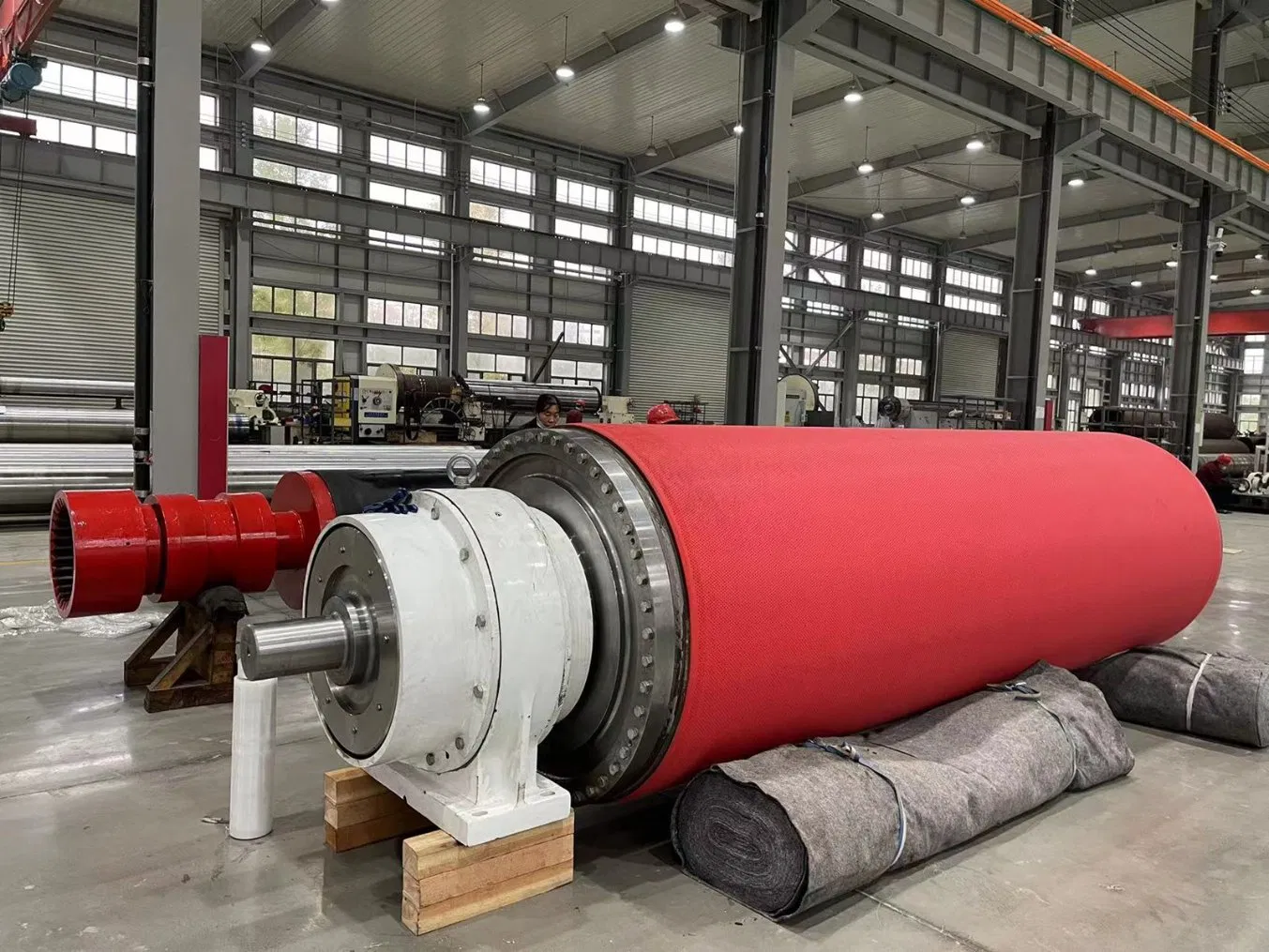In the intricate and high-speed world of papermaking, every single component matters. From the headbox to the winder, efficiency is the name of the game. However, many experts agree that the press section is where mills can make or lose the most ground. It’s the critical juncture where water is mechanically squeezed from the delicate paper web, a process that directly impacts everything from sheet strength to the massive energy consumption of the dryer section. And at the heart of this process, you'll often find a true workhorse: the blind hole press roll.
Frankly speaking, the performance of your press rolls can define your operational success. When you're looking to upgrade or replace these crucial assets, sourcing them effectively is paramount. This is where understanding the market for blind hole press roll wholesale becomes not just a procurement task, but a strategic advantage. It's about finding a partner who can deliver precision, durability, and value, ensuring your paper machine runs faster, smoother, and more profitably. Let's dive in.
What Exactly is a Blind Hole Press Roll and Why Does It Matter?
Before we talk about sourcing, it's essential to understand what we're dealing with. A blind hole press roll, sometimes called a blind drilled roll, might look simple from a distance, but it's a piece of sophisticated engineering designed for one primary purpose: highly efficient water removal.
The Anatomy of a Dewatering Powerhouse
At its core, the roll consists of a heavy, rigid metal body, typically made from cast iron or forged steel, which provides the necessary strength and stability to withstand immense pressures. This core is then covered with a durable, high-performance material, usually a specialized rubber or polyurethane compound. But the magic, to be honest, lies in the surface of this cover.
The cover is drilled with thousands of small holes. The key term here is "blind"—these holes don't go all the way through the cover to the core. They are essentially tiny reservoirs, typically 10-15 mm deep. They are drilled in a specific pattern, often a spiral or staggered design, to maximize water collection without compromising the structural integrity of the cover or marking the paper sheet.

The Science of Water Removal
So, how does this design work in practice? Have you ever wondered how so much water can be removed in a fraction of a second? It’s all about hydraulics and pressure.
As the paper web, sandwiched between two press felts, passes through the "nip" (the high-pressure point between two rolls), the immense force squeezes water out of the sheet. Instead of being reabsorbed by the felt or the sheet itself, this water is forced into the void provided by the blind holes. The holes act as temporary storage, effectively capturing the water and preventing it from returning to the paper web.
As the roll rotates out of the nip, the pressure is released. The collected water is then expelled from the holes by a combination of centrifugal force and, in some setups, a cleaning shower and doctor blade system. This cycle happens continuously at incredibly high speeds, making the blind drilled roll a far more efficient dewatering tool than a simple plain press roll. It’s a clever solution that offers a significant upgrade in performance without the high energy costs and noise associated with full suction rolls.
The Unseen Benefits: How Blind Drilled Rolls Elevate Your Production
Investing in high-quality blind drilled rolls isn't just about replacing a part; it's about upgrading your entire process. The benefits ripple through the production line, impacting everything from energy bills to the final quality of your product.
Maximizing Dewatering Efficiency
This is the most significant and immediate benefit. By removing more water in the press section, you drastically reduce the load on the dryer section. It's worth noting that the dryer section is, by far, the most energy-intensive part of a paper machine. For every 1% increase in sheet dryness leaving the press section, you can achieve an approximate 4-5% reduction in steam consumption in the dryers. This translates directly to massive energy savings and a lower carbon footprint.
Furthermore, improved dewatering efficiency of blind drilled rolls allows for higher machine speeds. When the sheet is drier and stronger, it can withstand the tensions of the machine at a faster pace, directly increasing your mill's output and profitability.
Enhancing Paper Sheet Quality
The quality of the final product is always a top priority. Blind hole rolls offer distinct advantages here. Unlike suction rolls, which can sometimes leave shadow marks on the sheet due to the through-holes, blind drilled rolls provide a more uniform pressure distribution. This results in:
- Reduced Sheet Marking: A smoother, more uniform sheet surface.
- Improved Bulk and Smoothness: The gentler, hydraulic pressure action helps maintain sheet bulk while improving surface characteristics.
- Better Felt Performance: By efficiently removing water, these rolls help keep the press felts cleaner and more open, extending their operational life and ensuring consistent performance.
Operational Advantages and Durability
From a maintenance and operations perspective, blind drilled rolls are often a preferred choice. They operate much more quietly than suction rolls, which require powerful vacuum pumps that generate significant noise. This improves the working environment for machine operators. Additionally, they have fewer complex internal components (no internal suction box), which can lead to simpler maintenance and greater reliability over the long term.
Navigating the Market: Your Guide to Sourcing Blind Hole Press Roll Wholesale
Now we get to the heart of the matter. You know you need these rolls, but how do you find a reliable partner for blind hole press roll wholesale purchasing? This isn't like buying office supplies; it's a significant capital investment that requires careful consideration. A great supplier is more than just a vendor; they are a technical partner.
Key Criteria for Selecting a Wholesale Supplier
When evaluating potential suppliers, you need to look beyond the price tag. In my experience, focusing on these key areas will save you a lot of headaches down the road.
- Manufacturing Precision and Quality Control: This is non-negotiable. The supplier must demonstrate stringent quality control over every step. This includes the casting of the roll core, the application of the cover, the precision of the drilling (uniform depth, diameter, and angle), and the final grinding and balancing of the roll. Ask about their ISO certification and internal QC processes.
- Material Science Expertise: A top-tier supplier will have deep knowledge of polymer science. They should be able to recommend the perfect rubber or polyurethane compound for your specific application—whether you're producing fine paper, newsprint, or heavy board. They should understand how different chemicals and temperatures in your process will affect the roll cover's lifespan.
- Customization and Engineering Capabilities: No two paper machines are identical. A good supplier won't offer a one-size-fits-all solution. They should have an engineering team that can work with you to design a roll with the optimal crown, P&J hardness, and hole pattern for your machine's unique conditions and the grades of paper you produce.
- After-Sales Support and Services: What happens after the roll is delivered? A great partner will offer comprehensive support, including installation guidance, performance monitoring, and, crucially, roll re-covering and re-grinding services. This full-lifecycle approach is a hallmark of a quality paper machine roll supplier.

Questions to Ask Your Potential Supplier
When you're in discussion with a potential wholesale partner, don't be shy. Arm yourself with questions that cut to the chase. Have you ever been stuck with a supplier who couldn't deliver on their promises? Asking the right questions upfront can prevent that.
- What is your typical lead time for a custom roll order?
- Can you provide case studies or references from mills with similar machines or paper grades?
- What is your process for determining the correct crown profile for our specific press position?
- Describe your quality assurance testing for both the roll core and the final cover.
- What warranties do you offer on your roll covers against bonding failure or premature wear?
- What are the logistics and costs associated with your roll re-covering services?
Technical Specifications That You Cannot Ignore
To have a truly productive conversation with a supplier, you need to speak their language. Understanding a few key technical specifications will empower you to make a more informed decision and ensure you get a product that is perfectly suited for your needs.
Understanding Roll Cover Materials
The choice between rubber and polyurethane is a critical one.
- Rubber Covers: The traditional choice, offering excellent elasticity and a wide range of hardness options. They are often more cost-effective upfront but may have a shorter lifespan in highly abrasive or chemically aggressive environments.
- Polyurethane Covers: A more modern, high-performance option. Polyurethane offers superior abrasion resistance, toughness, and load-bearing capacity. It can often run longer between grinds, leading to a lower total cost of ownership despite a higher initial investment. It's an excellent choice for demanding, high-speed positions.
The Devil is in the Details: Hole Pattern and Density
The "open area" of a roll—the percentage of the surface area taken up by holes—is a key parameter. A higher open area (typically 15-25%) provides more volume for water storage but can reduce the land area available for pressing. The pattern itself also matters. A spiral pattern is often preferred as it provides a more continuous and uniform dewatering path, minimizing vibration at high speeds. The supplier should be able to model and recommend the ideal hole diameter, depth, and pattern for your application.
Crown and P&J Hardness: The Balancing Act
These two specifications work together to define the shape and nature of the press nip.
- Crown: A press roll is not perfectly cylindrical. It is ground with a slight convex curve or "crown" in the middle. This is done to compensate for the roll's natural tendency to deflect or bend under the immense pressure of the nip. A correctly crowned roll ensures that the pressure is perfectly uniform across the entire width of the paper sheet.
- P&J Hardness: This is a measure of the roll cover's softness, measured with a Pusey & Jones plastometer. A softer cover (higher P&J number) creates a wider nip, which allows for a longer "dwell time" for water to be pressed out. A harder cover creates a narrower, higher-pressure nip. The ideal hardness depends on the press position, machine speed, and paper grade. Getting this right is crucial for all industrial paper machine press rolls.
Ultimately, choosing the right blind hole press roll is a decision that pays dividends in efficiency, quality, and profitability. By focusing on quality manufacturing, technical expertise, and a true partnership approach, you can secure a reliable blind hole press roll wholesale supply that will keep your mill running at peak performance for years to come. It’s an investment in the very heart of your operation.
For more detailed information, please visit our official website:Blind hole press roll wholesale
About the author: John Carter is a veteran paper machine engineer with over 25 years of experience in optimizing press section performance and sourcing industrial components. He has worked with mills across North America and Europe, helping them enhance dewatering efficiency and increase machine speeds. John is passionate about sharing his practical, hands-on knowledge to help the next generation of paper industry professionals succeed. He currently works as a consultant, specializing in press roll technology and operational troubleshooting.


